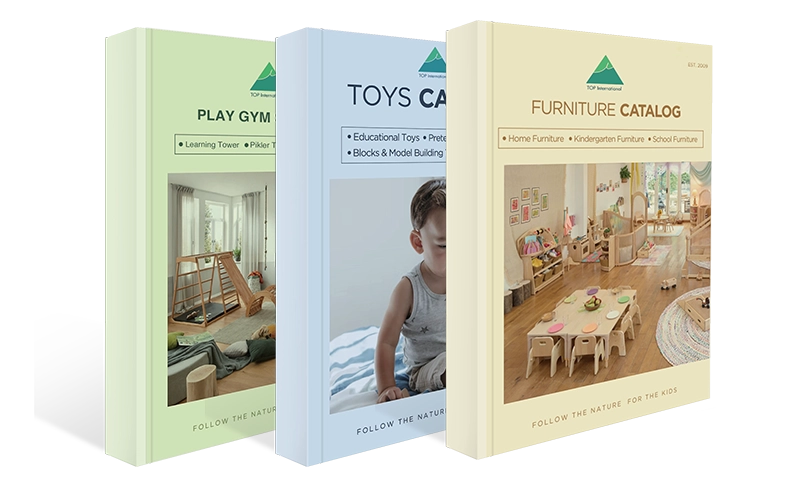How do we truly understand what children need? Are we missing key developmental signs in our classrooms? Can Childhood Observation help us respond better to their behavior and emotions? What are the most effective ways to observe children without interrupting their natural rhythm?
Childhood Observation is a powerful method for understanding children’s thoughts, needs, and developmental progress. By observing naturally and systematically, educators can tailor support based on real behaviors. This leads to improved learning outcomes, emotional security, and stronger teacher-child connections. Practical observation helps us notice learning styles, social interactions, and potential concerns early.
Mastering Childhood Observation takes more than just watching—it requires the proper techniques, timing, and mindset. In the sections below, I’ll share practical, proven strategies that can help any educator or parent become a more mindful and insightful observer of children.
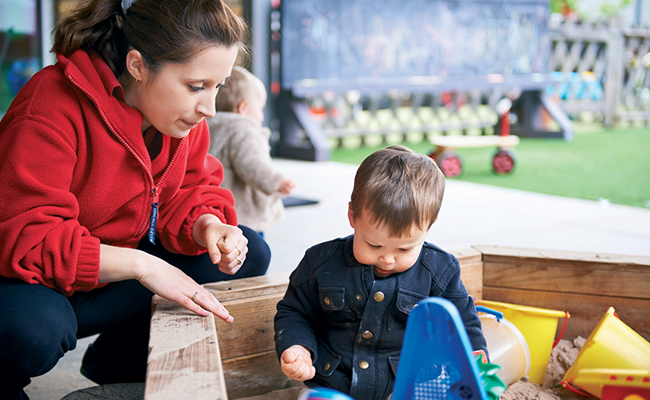

ما هي مراقبة الطفولة؟
Childhood Observation is the intentional act of watching, listening, and documenting a child’s behavior, emotions, and interactions in their natural environment. Rather than intervening or directing the child, the adult becomes a quiet observer, learning from the way the child explores the world, plays, solves problems, and interacts with others.
Through ongoing Childhood Observation, parents, teachers, and caregivers gain insights into a child’s development in real time. It reveals not only what a child knows, but also how they learn, how they handle frustration, and how they express joy, curiosity, or empathy. These observations help adults adjust their teaching methods, environment, or support strategies to meet the child’s individual needs.
There are several methods of Childhood Observation, ranging from anecdotal notes to more structured tools like checklists, time sampling, and running records. Each technique serves a different purpose, but they all aim to capture authentic behavior without disrupting the child’s experience.
This kind of observation isn’t just about seeing what a child does—it’s about understanding why. For example, a teacher might notice that a child consistently avoids group activities. Rather than labeling the child as shy, thoughtful observation may reveal a need for more structure or support in social situations.
Observation also supports a more respectful, child-centered approach to teaching. Instead of relying solely on standardized assessments, teachers base decisions on real-life behaviors and daily interactions. This helps create classrooms that are more responsive and emotionally supportive.
In short, learning to observe well is a skill that takes time and practice, but it’s worth it. By quietly watching and thoughtfully reflecting, we begin to see each child as a unique individual on their journey of growth.
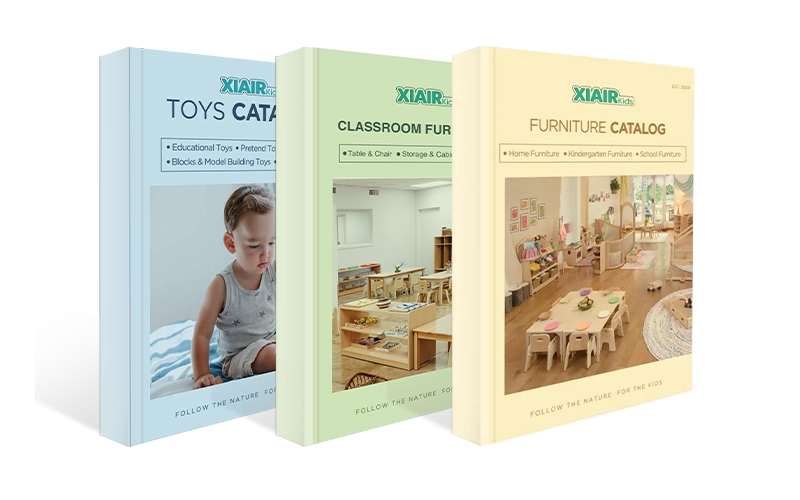
Receive a free catalog and custom layout to help you design your ideal classroom easily.
لماذا تعتبر الملاحظة مهمة في مرحلة الطفولة المبكرة؟
Observation is a cornerstone of effective teaching in early childhood education. It provides educators with critical insights into a child’s development, helping them to understand how children learn, interact, and engage with their environment.
تتجاوز أهمية الملاحظة في تعليم الطفولة المبكرة مجرد مراقبة السلوك؛ فهي تلعب دورًا أساسيًا في توجيه العملية التعليمية. يمكن للمعلمين متابعة تقدم الأطفال في مختلف جوانب النمو، مثل اكتساب اللغة، والمهارات الاجتماعية، والقدرات المعرفية، وتنظيم الانفعالات. تساعد هذه الملاحظات المعلمين على تحديد نقاط قوة الطفل وصعوبات التعلم المحتملة، مما يُمكّنهم من بناء تجارب تعليمية شخصية مُصممة خصيصًا لتلبية احتياجاتهم الفردية.
A few other potential actions and outcomes for childhood observation include:
- Better understanding of the child’s communication style
- Identify signs of behavioral challenges or special needs
- Document the child’s language development
- Record how the child is using new skills
- Analyze and correct negative behavior patterns
- Acknowledge and reinforce positive behavior patterns
- Evaluate interactions with other children
- Adjust teaching practices based on observations
- Determine whether the child is ready for the next steps and further learning

إن مراقبة الطفولة المبكرة في الفصل الدراسي تسمح للمعلمين بتقييم كيفية تفاعل الأطفال مع أقرانهم و نهج مختلف الأنشطة. تضمن هذه التغذية الراجعة المستمرة والفورية أن المعلمين لا يتفاعلون مع السلوكيات فحسب، بل يرسمون مسار تعلم الطفل بفعالية بناءً على رؤى موضوعية. علاوة على ذلك، توفر المراقبة والتقييم المنهجيان في تعليم الطفولة المبكرة أساسًا قائمًا على البيانات لاتخاذ قرارات تُعزز بيئة التعلممن خلال فهم مرحلة نمو كل طفل، يمكن للمعلمين تعديل استراتيجيات التدريس والأنشطة والأهداف وفقًا لذلك، مما يجعل التعلم أكثر فعالية ومتعة لكل طفل.
من خلال هذه الملاحظات، يُعزز المعلمون أيضًا روابطهم مع أولياء الأمور. ويمكنهم تقديم ملاحظات قيّمة حول نمو الطفل وتعلمه، مما يُعزز أهمية النهج التعاوني في التعليم. وبالتالي، فإن الملاحظة ليست مجرد أداة للتقييم، بل هي أيضًا وسيلة لتعزيز العلاقات الإيجابية والتواصل بين المعلمين والأطفال والأسر.


Receive a free catalog and custom layout to help you design your ideal classroom easily.
ما هي طرق ملاحظة الطفولة المختلفة؟
تُمكّن تقنيات الملاحظة المتنوعة في تعليم الطفولة المبكرة المُعلّمين من جمع بيانات مُختلفة حول نمو الطفل. تُساعد هذه الأساليب المُعلّمين على فهم سلوكيات مُحددة، وتتبع التقدّم مع مرور الوقت، وتحديد جوانب التحسين. دعونا نستكشف بعضًا من أكثر أساليب ملاحظة الطفولة المبكرة شيوعًا.
السجلات القصصية
السجلات القصصية هي سرد موجز ووصفي للأحداث أو السلوكيات المهمة التي تُلاحظ لدى الطفل. تُكتب هذه السجلات بصيغة سردية، وهي قيّمة لأنها تُقدم لمحة سريعة عن أفعال الطفل أو ردود أفعاله تجاه مواقف محددة. غالبًا ما تتضمن نماذج مراقبة السلوك في مرحلة الطفولة المبكرة سجلات قصصية كجزء من تقييم شامل لنمو الطفل.
يمكن للمعلمين تكوين صورة أوضح لقدرات الطفل وتقدمه من خلال التركيز على لحظات شخصية مهمة. ويمكن للسجلات القصصية أن تُبرز نقاط القوة أو مواطن القلق التي قد لا تُرصد في الملاحظات المنظمة.
تشغيل السجلات
تُوفر السجلات الجارية توثيقًا مستمرًا وآنيًا لسلوك الطفل وأفكاره وتفاعلاته على مدار فترة زمنية محددة. تتضمن هذه الطريقة تدوين كل ما يقوله الطفل ويفعله خلال فترة ملاحظة محددة. يُعدّ تسجيل الملاحظات الجارية في مرحلة الطفولة المبكرة مفيدًا بشكل خاص لتتبع مسار سلوك الطفل واكتساب فهم أعمق لأنماط تفكيره وعمليات اتخاذ القرارات لديه.
تُعدّ سجلات الأداء قيّمة لفهم كيفية تفاعل الأطفال مع بيئتهم وأقرانهم، فهي تُزوّد المُعلّمين برؤية شاملة لمسار نموّ الطفل.
قصص التعلم
قصص التعلم هي سرديات توثّق لحظات التعلّم المهمة والإنجازات والتحديات التي واجهها الطفل. عادةً ما تُكتب هذه القصص بأسلوب إيجابي، مُركّزة على نقاط قوة الطفل ونموّه الشخصي. وكثيرًا ما يستخدم المعلمون قصص التعلم لتشجيع ثقة الأطفال بأنفسهم وتعزيز نموّهم في مختلف المجالات.
تُعد طريقة الملاحظة هذه مفيدة لالتقاط الاستجابات العاطفية والتفاعلات الاجتماعية للطفل، مما يجعلها خيارًا مثاليًا للمراقبة والتقييم في بيئات الطفولة المبكرة.

عينات الوقت
Time samples involve recording a child’s activities at intervals, such as every 5 or 10 minutes, over a specific period. This childhood observation method often tracks repetitive behaviors or documents how children engage in structured tasks like play or group work. Educators can also use time samples to gather data on a child’s focus, interests, and responses to various activities.
تعتبر عينات الوقت فعالة بشكل خاص في نماذج مراقبة سلوك الأطفال في مرحلة الطفولة المبكرة، مما يسمح للمعلمين بمراقبة الأنماط في السلوك وتحديد أي مجالات قد تتطلب اهتمامًا إضافيًا.
ملاحظات
التدوينات هي ملاحظات موجزة وغير رسمية يدوّنها المعلمون أثناء الملاحظة أو بعدها مباشرةً. توثّق هذه الملاحظات السلوكيات أو الأفعال المهمة دون وصف أو تفسير مُفصّل. يُمكن تسجيلها بسرعة، ثم توسيعها لاحقًا لتشمل سردًا أكثر تفصيلًا. في مرحلة الطفولة المبكرة، تُستخدم التدوينات غالبًا كمرجع سريع لتذكر اللحظات المهمة التي يُمكن تحليلها بشكل أعمق.
توفر هذه الطريقة نهجًا مرنًا لتسجيل الملاحظات ويمكن أن تكون مفيدة بشكل خاص في بيئات الفصول الدراسية المزدحمة ذات الوقت المحدود.
نماذج أعمال
Work samples are tangible pieces of a child’s work, such as drawings, writings, or crafts, that document their development. Educators collect these samples to evaluate fine motor skills, cognitive abilities, and creative expression. Early childhood observation samples provide physical evidence of a child’s learning process, helping teachers assess progress and tailor future lessons.
يمكن للمعلمين فهم قدرات الطفل وأسلوب التعلم بشكل أفضل من خلال مقارنة عينات العمل بمرور الوقت.
الصور الفوتوغرافية
الصور أدوات فعّالة لتوثيق نمو الطفل وإنجازاته. غالبًا ما يلتقط المعلمون صورًا لتسجيل لحظات يصعب التعبير عنها كتابيًا، مثل التفاعلات الاجتماعية أو الإنجازات البدنية. عادةً ما تتضمن أدوات الملاحظة في مرحلة الطفولة المبكرة الصور كجزء من عملية التوثيق، مما يوفر سجلًا بصريًا لتجارب الطفل وتقدمه.
كما تنقل الصور أيضًا تطور الطفل إلى الوالدين، مما يجعلها أدوات قيمة للمراقبة والتوثيق في بيئات الطفولة المبكرة.

أنواع مختلفة من الملاحظات في مرحلة الطفولة المبكرة
تُستخدم أنواعٌ عديدة من الملاحظات في مرحلة الطفولة المبكرة، ولكلٍّ منها غرضٌ مُميزٌ في فهم نمو الطفل. يمكن أن تكون هذه الملاحظات الطفولية مُهيكلةً أو غير مُهيكلة، وتُوفر مجموعةً واسعةً من الرؤى حول سلوك الطفل، وأسلوب تعلّمه، وحالته العاطفية. تشمل أنواع الملاحظات الرئيسية السجلات القصصية، والسجلات الجارية، وعيناتٍ زمنية.
الملاحظات المنظمة
تُخطط الملاحظات المنظمة بعناية وتُركز على سلوك الطفل. يستخدم المعلمون معايير أو قوائم مرجعية مُحددة مسبقًا لتقييم قدرات الطفل، وتفاعلاته الاجتماعية، واستجاباته العاطفية في مواقف مُحددة. على سبيل المثال، قد يُلاحظ المعلم ردود فعل الطفل عند تعريفه بأقران جُدد أو نشاط جديد، مُشيرًا بوضوح إلى ما إذا كان الطفل يشعر بالراحة، أو يتفاعل، أو ينسحب.
غالبًا ما تقيس الملاحظات المنظمة مراحل نمو محددة، مثل اكتساب اللغة أو المهارات الحركية الدقيقة. وتوفر بيانات كمية تساعد في تتبع التقدم مع مرور الوقت.

ملاحظات غير منظمة
الملاحظات غير المنظمة أقل رسمية، وتتضمن مراقبة المعلم للطفل في بيئة أكثر عفوية وطبيعية. تتيح هذه الملاحظات الطفولية للأطفال المشاركة في الأنشطة أو اللعب دون مقاطعة أو توجيه. على سبيل المثال، قد يراقب المعلم الأطفال وهم يتفاعلون في بيئة لعب حر، ويوثق سلوكياتهم مثل المشاركة، وحل المشكلات، وقيادة مجموعة.
تُقدّم الملاحظات غير المُنظّمة رؤيةً أكثر شموليةً لسلوك الطفل. فهي تكشف عن كيفية تصرف الطفل في مواقف الحياة الواقعية، مُقدّمةً رؤىً مُعمّقةً حول شخصيته وإبداعه وديناميكياته الاجتماعية.
الملاحظات الطبيعية
تُجرى الملاحظات الطبيعية في بيئة الطفل الاعتيادية، كالفصل الدراسي أو المنزل أو الملعب. يتيح هذا النوع من الملاحظات للمعلمين رؤية سلوك الأطفال في بيئات مألوفة، كاشفًا عن أنماط سلوكية فعلية. كما تساعد الملاحظات الطبيعية المعلمين على فهم كيفية استجابة الأطفال للروتين اليومي، وتفاعلهم مع البالغين والأقران، وتفاعلهم مع محيطهم.
ويعد هذا النوع من الملاحظة قيما بشكل خاص لتتبع التطور العاطفي والاجتماعي لأنه يعكس الاستجابات الطبيعية للطفل للمحفزات في بيئته.


ماذا يتابع المعلمون؟
يراقب المعلمون جوانب مختلفة من نمو الطفل من خلال مراقبة الطفولة لضمان تلبية احتياجاته الفردية وتعزيز نموه الشامل. يُعد النمو المعرفي والجسدي والاجتماعي والعاطفي واللغوي مجالات رئيسية. دعونا نستكشف كلًا من هذه المجالات التنموية.
التطور المعرفي
يشير التطور المعرفي إلى قدرة الطفل على التفكير والاستدلال وفهم العالم من حوله. يلاحظ المعلمون كيفية حل الأطفال للمشكلات، وتمييزهم للأنماط، وانخراطهم في المهام التي تتطلب التفكير النقدي. على سبيل المثال، قد يلاحظ المعلم كيفية إكمال الطفل لإحدى الألغاز أو اتباعه للتعليمات خلال نشاط جماعي. ومن خلال توثيق هذه السلوكيات، يكتسب المعلمون فهمًا قيّمًا للتقدم المعرفي للطفل.
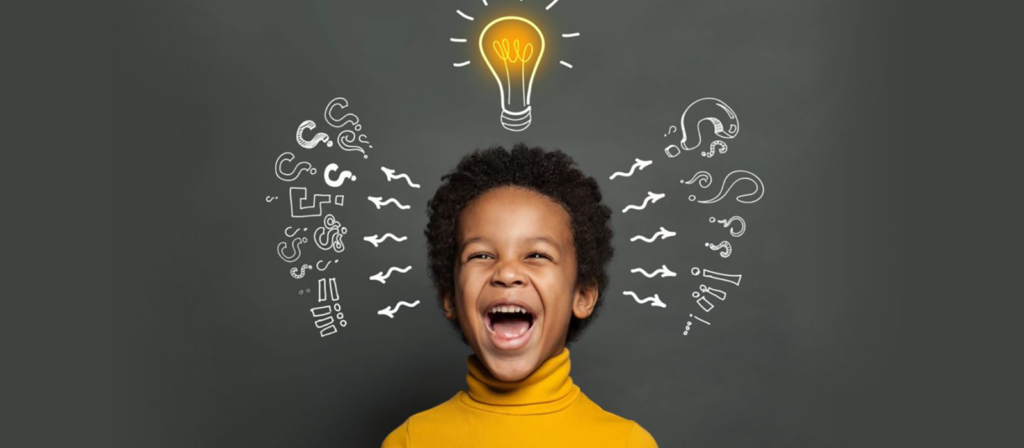
التطور البدني
يشمل التطور البدني المهارات الحركية الدقيقة (مثل الرسم والكتابة) والمهارات الحركية الكبرى (مثل الجري والقفز). يستخدم المعلمون أدوات مراقبة الطفولة المبكرة لتتبع التقدم في هذه المجالات، مما يساعدهم على تحديد متى قد يحتاج الطفل إلى دعم إضافي. على سبيل المثال، قد يلاحظ المعلم كيف يتحسن تنسيق الطفل أثناء مشاركته في أنشطة مثل القص بالمقص أو ركوب الدراجة ثلاثية العجلات.

التنمية الاجتماعية
يُعدّ التطور الاجتماعي محورًا أساسيًا في مراقبة تعليم الطفولة المبكرة. يراقب المعلمون كيفية تفاعل الأطفال مع أقرانهم، وكيفية تفاوضهم وحل نزاعاتهم، وكيفية مشاركتهم أو تبادل الأدوار. يُتيح تتبع التفاعلات الاجتماعية فهمًا أعمق لكيفية تطوير الأطفال الأصحاء لمهارات التعامل مع الآخرين وفهمهم للمعايير الاجتماعية.

التطور العاطفي
يركز التطور العاطفي على كيفية فهم الأطفال لمشاعرهم وإدارتهم لها. من خلال الملاحظة، يمكن للمعلمين ملاحظة كيفية استجابة الأطفال للإحباط أو الفرح أو القلق، وكيفية تعاملهم مع هذه المشاعر. على سبيل المثال، قد يوثّق المعلم قدرة الطفل على تهدئة نفسه بعد انزعاجه خلال نشاط جماعي، مما يُبرز قدرته المتزايدة على تنظيم مشاعره.

تطوير اللغة والقراءة والكتابة
Language and literacy development are other areas tracked during early childhood observation. Teachers document the child’s ability to use language to express themselves, follow instructions, and engage in storytelling. Observations can reveal how a child develops vocabulary, syntax, and conversational skills over time.

ما الذي يتضمنه تقرير مراقبة الطفولة؟
تقرير مراقبة الطفولة وثيقة شاملة تُلخص نتائج المُعلّم من خلال مُلاحظة طفل خلال فترة مُحددة. يلعب هذا التقرير دورًا حاسمًا في توثيق نمو الطفل، ويُمكن أن يكون أداة قيّمة للمُعلّمين وأولياء الأمور. يُقدّم تقرير مراقبة الطفولة المُصمّم جيدًا رؤىً مُعمّقة في مُختلف مجالات النمو، ويُساعد في توجيه القرارات التعليمية.
1. المعلومات الأساسية للطفل
يتضمن القسم الأول من تقرير مراقبة الطفولة معلومات أساسية عن الطفل قيد المراقبة. ويتألف عادةً من:
- اسم الطفل
- العمر أو تاريخ الميلاد
- تاريخ(تواريخ) المراقبة:التواريخ أو الأطر الزمنية المحددة أثناء المراقبة.
- الفصل الدراسي أو المكان:الموقع الذي تم إجراء الملاحظة فيه (على سبيل المثال، الفصل الدراسي، الملعب).
تساعد هذه المعلومات الأساسية في وضع التقرير في سياقه وتضمن ربط الملاحظات بطفل معين ومرحلة نموه.
2. إعداد وسياق الملاحظة
يصف القسم التالي البيئة التي أُجريت فيها المراقبة. ويشمل ذلك تفاصيل حول:
- البيئة:سواء حدثت الملاحظة في الفصل الدراسي، أو أثناء اللعب، أو أثناء الأنشطة الجماعية، أو في بيئة أكثر تنظيماً.
- سياق النشاطماذا كان يحدث أثناء المراقبة؟ على سبيل المثال، هل كان الطفل يعمل على مهمة محددة، أو يلعب مع أقرانه، أو يشارك في نشاط تعليمي جديد؟
يساعد هذا السياق على توضيح سلوكيات الطفل وتفاعلاته مع بيئته والأنشطة التي يشارك فيها. ويوفر نظرة ثاقبة حول كيفية تأثير البيئة على سلوك الطفل ونموه.
3. ملاحظات حول سلوك الطفل وتطوره
The core of any childhood observation report is a detailed description of the child’s behavior during the observation period. This section focuses on specific actions, interactions, and responses that the child demonstrated:
- التطور المعرفي:كيف يقوم الطفل بحل المشكلات، أو معالجة المعلومات، أو التعامل مع المفاهيم الجديدة.
- التطور البدني:الأفعال التي توضح المهارات الحركية، مثل الجري، أو القفز، أو التعامل مع الأشياء.
- التنمية الاجتماعية:التفاعلات مع الأقران والبالغين، بما في ذلك التعاون والمشاركة وحل النزاعات.
- التطور العاطفي:الاستجابات للعواطف، مثل الإحباط، والسعادة، والقلق، وكيفية تنظيم الطفل لعواطفه.
تُوثَّق كل ملاحظة بعناية، مع رصد تفاصيل نمو الطفل لحظة بلحظة. ويشمل ذلك اللحظات الإيجابية (مثل إنجاز الطفل لمهمة) والتحديات (مثل صعوبة العمل ضمن مجموعة).

4. التحليل والتفسير
بعد توثيق سلوك الطفل، يقوم المعلم يحلل الملاحظات. يقدم هذا القسم تفسيرًا لأفعال الطفل وعلاقتها بنموه. يساعد التحليل على الإجابة عن أسئلة مثل:
- ماذا تشير الملاحظات حول نقاط القوة لدى الطفل ومجالات النمو؟
- هل هناك أي أنماط ملحوظة في سلوك الطفل أو نموه؟
- كيف يستجيب الطفل للتحديات أو المواقف الجديدة؟
يساعد هذا التحليل في فهم تقدم الطفل ويعمل كدليل لاستراتيجيات وتدخلات تعليمية أخرى.
5. توصيات للخطوات التالية
وأخيرًا، يتضمن تقرير مراقبة الطفولة توصياتٍ لدعم نمو الطفل وتطوره المستمر. تستند هذه الاقتراحات إلى الملاحظات والتحليلات، وقد تشمل:
- استراتيجيات مستهدفة:طرق تدريس أو تدخلات محددة لمعالجة المجالات التي قد يحتاج فيها الطفل إلى دعم إضافي (على سبيل المثال، تعزيز المهارات الاجتماعية أو تطوير المهارات الحركية الدقيقة).
- أهداف التعلم:أهداف قصيرة المدى أو طويلة المدى لتوجيه تقدم الطفل في مجالات محددة (على سبيل المثال، تطوير مهارات اللغة، وتحسين سلوكيات العمل الجماعي).
- الملاحظات المستقبلية:تحديد أي مجالات ينبغي مراقبتها عن كثب في الملاحظات اللاحقة لتتبع التقدم أو التحديات.
These recommendations help teachers and parents align their efforts to create an environment that fosters the child’s development holistically and individually.

Receive a free catalog and custom layout to help you design your ideal classroom easily.
Considerations for Documenting
Effective childhood observation is only as valuable as the documentation that follows. When observations are recorded thoughtfully, they become powerful tools for reflection, communication, and action. Whether for planning lessons, discussing concerns with families, or identifying developmental patterns, high-quality documentation ensures the observation serves its true purpose.
Writing observations isn’t just about putting words on paper. It’s about choosing the right words—those that describe behavior accurately, respectfully, and usefully.
Objectivity
The most crucial rule in documenting is to remain objective. This means describing only what you see and hear, without making assumptions, judgments, or interpretations. Instead of writing, “Emma was angry and rude,” it’s more appropriate to say, “Emma crossed her arms, frowned, and said, ‘I don’t want to play with you.’”
Objectivity removes personal bias from the record and keeps the focus on behavior. This matters because colleagues, supervisors, or families may review observations. A subjective or emotional tone can damage trust and distort the child’s experience.
In emotionally charged situations, such as conflict, tantrums, or refusal to follow instructions, it’s essential to pause and reflect before writing. Ask yourself: Am I describing the behavior, or am I expressing my feelings about it? By maintaining objectivity, we ensure that documentation remains professional, credible, and helpful for decision-making.
Specificity and Directness
Generalized or vague statements don’t offer much value. For documentation to be meaningful, it must be specific. This means including details like what the child said or did, what materials they used, and the time or setting of the event.
For instance, instead of writing, “Liam was creative during art time,” a more specific and direct observation would be, “Liam chose yellow and red paint and used a sponge to create overlapping circles. He said, ‘This is the sun and this is the fire.’” This version gives a clearer picture of the child’s thought process and choices.
Direct language avoids unnecessary interpretation or overexplaining. Stick to simple, factual verbs like “said,” “reached,” “placed,” “smiled,” “ran,” or “cried.” These words are easy to understand and leave little room for misinterpretation.
Directness also saves time. In fast-paced classroom settings, efficient documentation is essential. Being both clear and concise allows teachers to capture more moments with less confusion.
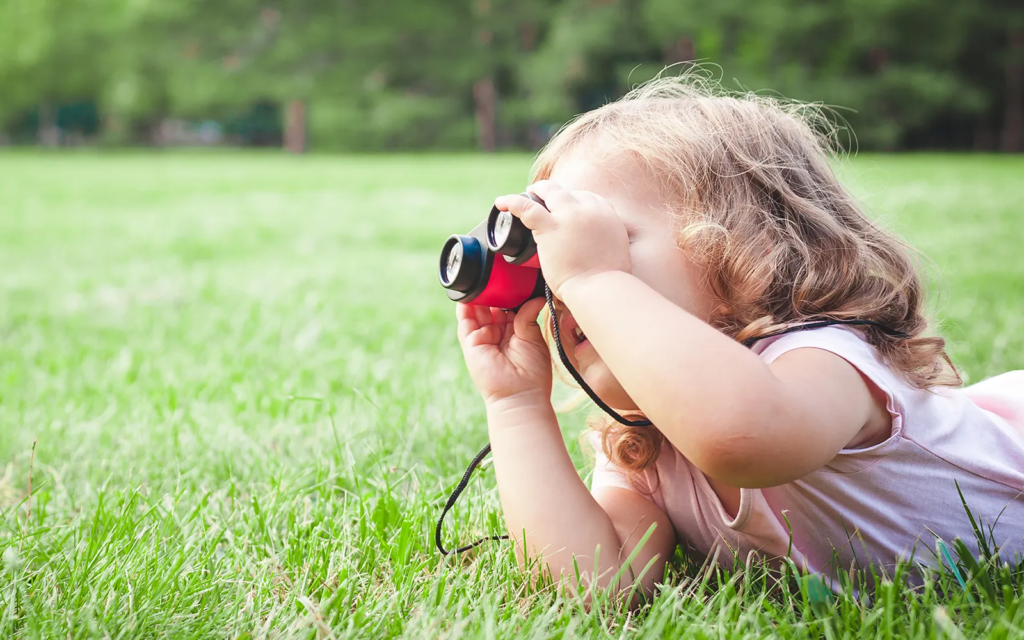
Mood and Emotional Tone
While objectivity is essential, that doesn’t mean we must ignore emotion altogether. Children express a wide range of emotions throughout the day, and noting these shifts, when done carefully, adds depth to the documentation.
The key is to focus on the observable signs of mood. For example, write “Ava looked down, her shoulders slumped, and she spoke softly when asked to clean up,” rather than “Ava was feeling sad.” The first version respects the child’s emotional state without guessing at causes or internal feelings.
It’s also essential to document positive emotional states, not just difficult ones. Noting joy, excitement, pride, or calmness helps paint a balanced, whole-child portrait over time. A record that only reflects problems misses opportunities to celebrate growth and strengths.
By acknowledging emotion in behaviorally grounded ways, we enrich our understanding of each child and how they respond to the world around them.
Completeness
An intense observation includes not only the behavior but also the context. Who else was present? What happened before and after? What materials were used? These details create a fuller picture and help educators identify patterns over time.
Let’s say a child throws a block across the room. If the documentation says, “Child threw a block,” it tells us very little. But if we write, “After another child took his block, Leo yelled, ‘That’s mine!’ and threw a block toward the shelf. He then crossed his arms and sat on the rug,” we begin to understand motivation, social dynamics, and emotional regulation.
Completeness also means following through—did the teacher respond? How did the child recover? Were there later reflections or apologies? Including this information helps connect the dots for future planning and helps avoid repeated incidents.

Receive a free catalog and custom layout to help you design your ideal classroom easily.
How to use childhood observations?
When we observe children, we gain access to a world that’s often missed in standardized testing and routine classroom interactions. But observation in itself isn’t enough. The real value of childhood observation comes when we apply what we see to real-life decisions in the classroom, at home, and in communication with families.
Create individualized lesson plans
Every child is unique. Some learn by touching, some by listening, and others by repeating actions until they master a skill. Through observation, teachers can begin to understand how each child learns best, not based on assumptions, but by watching how they interact with their environment, materials, and peers.
Let’s say a teacher notices that one child consistently chooses puzzles and works on them silently for long periods. Another child, in contrast, prefers movement-based activities and engages in lots of verbal interaction. Instead of offering the same lessons to both children, the teacher can use these observations to design personalized activities: hands-on logic challenges for the first child and group storytelling or dance-based learning for the second.
Observation also helps track interests over time. If a child shows sustained interest in animals, this might lead the teacher to integrate animal themes into reading, science, or art lessons. When lessons are rooted in genuine interest, engagement and learning deepen naturally.
This approach supports differentiated instruction and helps every child feel seen and supported. It also leads to more accurate assessments of progress, as children are evaluated within the context of their learning style and personal development journey.
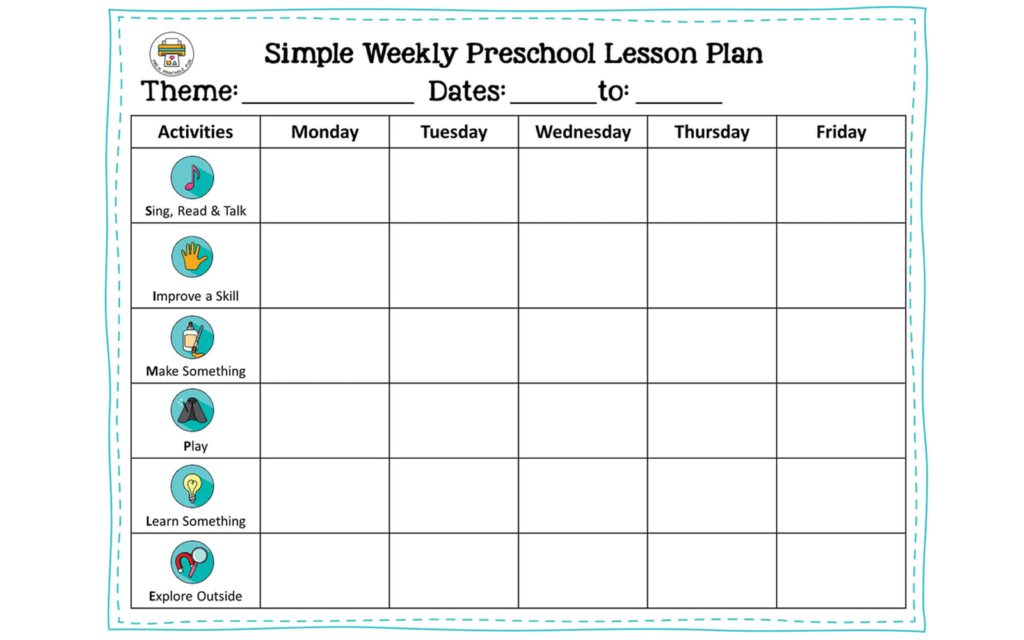
Enhance the classroom environment
Observing children can reveal whether a classroom setup truly supports learning or unintentionally blocks it. For example, a teacher might notice that children often avoid the reading corner or that group conflicts tend to arise in a specific area of the classroom. These patterns can highlight environmental issues such as poor layout, limited space, or lack of sensory variety.
By watching how children move through the space, what they gravitate toward, and where they struggle to focus or cooperate, educators can make informed adjustments. If a group of children frequently sits on the floor in a particular corner to read, it may be time to add cushions and turn that space into a quiet reading nook. If children are constantly pushing or arguing at a small table during art time, it might signal that more materials—or more room—are needed.
Changes based on observation don’t have to be expensive or dramatic. Sometimes, simply rotating toys, adjusting furniture placement, or adding visual cues can transform the energy of the room. Most importantly, these changes show children that their behaviors and needs are being noticed and respected, which supports a stronger sense of ownership and belonging.
Strengthen family-teacher communications
When educators share thoughtful observations with families, it builds trust and creates a partnership around the child’s development. Parents appreciate hearing more than just grades or behavior notes—they want to know how their child learns, how they interact with others, and how they handle challenges.
For example, instead of saying, “Your child is doing fine,” a teacher can say, “I’ve noticed that Maya has become more confident during group discussions. Last week, she volunteered to explain a math problem to her classmates.” This level of detail is only possible through consistent observation.
These shared insights also invite parents to share their observations from home. They may notice things that aren’t visible in the classroom, like how a child talks about school at the dinner table, or how they express emotions during playtime at home. This exchange builds a fuller picture of the child, which benefits everyone involved.
Moreover, when issues arise—such as behavior changes or learning difficulties—having a record of previous observations provides a valuable foundation for honest, constructive conversations. It helps avoid blame or confusion and keeps the focus on support and collaboration.
Identify developmental delays early
One of the most critical roles of observation is early detection. Development doesn’t happen on a fixed timeline, and while some variation is normal, unavoidable delays may require additional support. Through regular observation, teachers can notice if a child isn’t reaching expected milestones in language, motor skills, social interaction, or emotional regulation.
For instance, if a child rarely responds to their name, avoids eye contact, or doesn’t engage in pretend play beyond a certain age, these may be subtle signals of developmental concerns. These signs might be missed in group activities or short checklists, but through consistent, focused observation, they become more apparent.
Early identification doesn’t mean immediate labeling or judgment. It simply allows for timely discussion with specialists or families and the possibility of early intervention. The earlier a child receives support, the better the outcomes tend to be, both academically and emotionally.
Educators should document these patterns over time and across contexts, ensuring that any concerns are based on a complete picture of the child, not just a single moment or isolated behavior. When done with care and clarity, observation can help children access the support they need before problems become larger.

Receive a free catalog and custom layout to help you design your ideal classroom easily.
الأسئلة الشائعة
1. كيف تساهم الملاحظة والتقييم في مرحلة الطفولة المبكرة في نمو الطفل؟
تساعد الملاحظة والتقييم المعلمين على تتبع تقدم الطفل، وتحديد الاحتياجات التنموية، وإنشاء خطط تعليمية مخصصة تدعم نمو الطفل.
2. ما هو الدور الذي يلعبه تقرير مراقبة الطفل في تعليم الطفولة المبكرة؟
يوفر تقرير مراقبة الطفل سجلاً شاملاً لسلوكيات الطفل وتقدمه، مما يوفر رؤى حول نموه واستراتيجيات التعليم الإرشادية.
3. هل يمكن استخدام تقرير مراقبة الطفل لتحديد التأخيرات التنموية؟
نعم، يمكن لتقرير مراقبة الطفل تسليط الضوء على المجالات التي قد يحتاج فيها الطفل إلى دعم إضافي، مما يتيح التدخل المبكر في حالات التأخير في النمو.
4. كيف يمكن للوالدين استخدام تقرير مراقبة الطفل لدعم تعلم طفلهم؟
يمكن للوالدين استخدام تقرير مراقبة الطفل لفهم نقاط القوة لدى طفلهم ومجالات التحسين، مما يساعدهم على تعزيز التعلم في المنزل والتعاون مع المعلمين.
خاتمة
تُعدّ مراقبة الطفولة أداةً أساسيةً في تعليم الطفولة المبكرة، إذ تُزوّد المُعلّمين بالرؤى اللازمة لتقييم ودعم رحلة نموّ كل طفل الفريدة. ومن خلال المراقبة المنهجية في مرحلة الطفولة المبكرة، يتتبّع المُعلّمون نموّ الطفل المعرفي والجسدي والعاطفي والاجتماعي، مستخدمين هذه الملاحظات لتوجيه ممارسات التدريس وتحديد المجالات التي تحتاج إلى مزيد من الدعم.
تقرير مراقبة الطفولة وثيقة شاملة تتضمن معلومات أساسية عن الطفل، ووصفًا للبيئة المحيطة، وملاحظات مفصلة عن سلوكه ونموه، وتحليلًا لتقدمه، وتوصيات عملية للخطوات التالية. يقدم هذا التقرير لمحة عامة عن مرحلة نمو الطفل، ويساعد في رسم خارطة طريق لنموه المستمر، سواءً في الفصل الدراسي أو في المنزل.
يمكن للمعلمين اتخاذ قرارات مدروسة بشأن تخطيط الدروس، وتدخلات الأطفال، والتواصل مع أولياء الأمور من خلال دمج الملاحظة والتقييم في تعليم الطفولة المبكرة. تعزز هذه التقارير نهجًا تعاونيًا، يضمن تخصيص أساليب التدريس وتلبيتها لاحتياجات كل طفل، مما يؤدي في نهاية المطاف إلى خلق بيئة تعليمية أكثر دعمًا وفعالية.
طفلتعتبر تقارير مراقبة الأطفال ضرورية لتتبع التقدم وتحديد التأخيرات التنموية وتعزيز التجربة التعليمية، مما يجعلها حجر الزاوية في التعليم الجيد في مرحلة الطفولة المبكرة.







